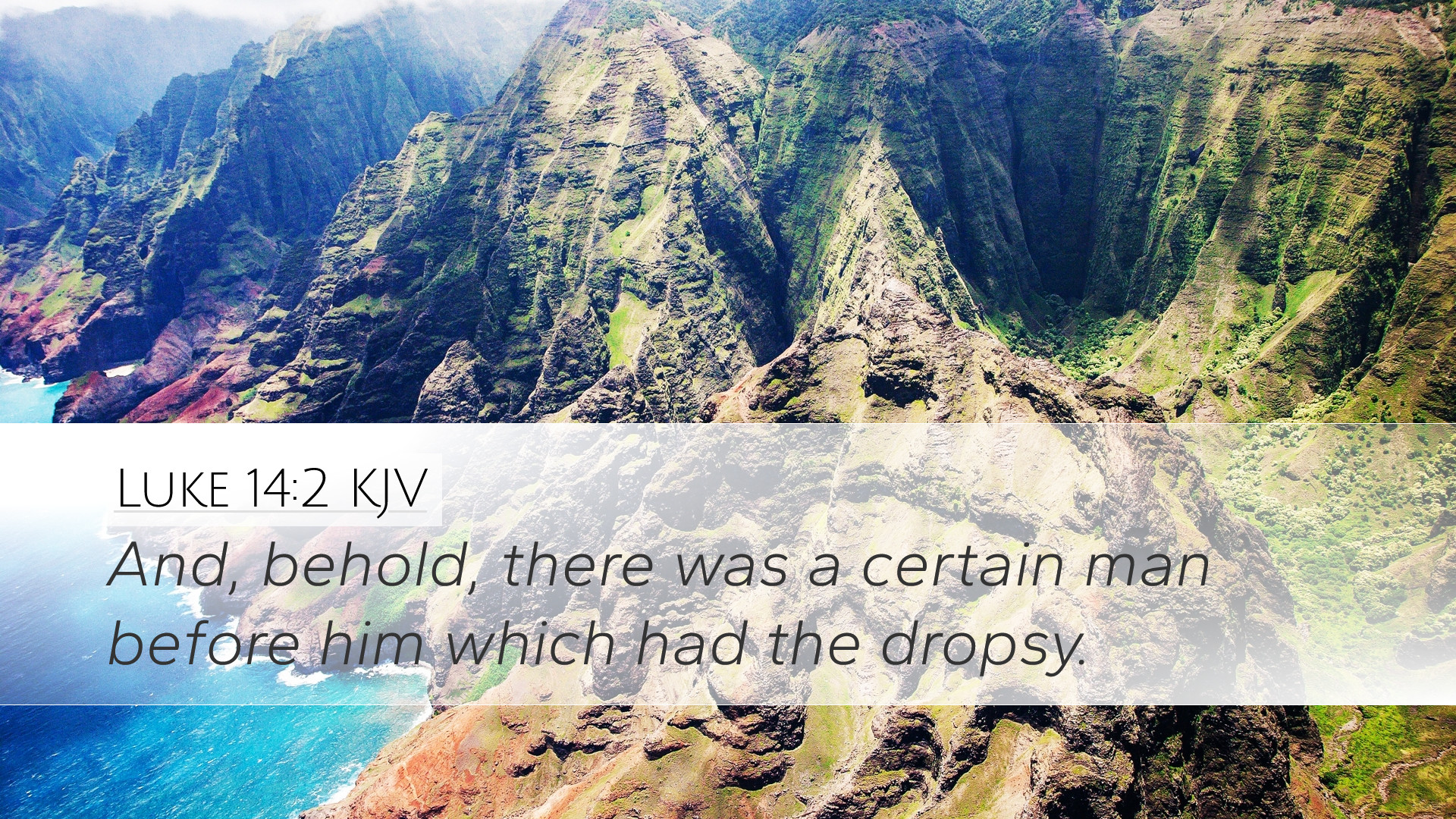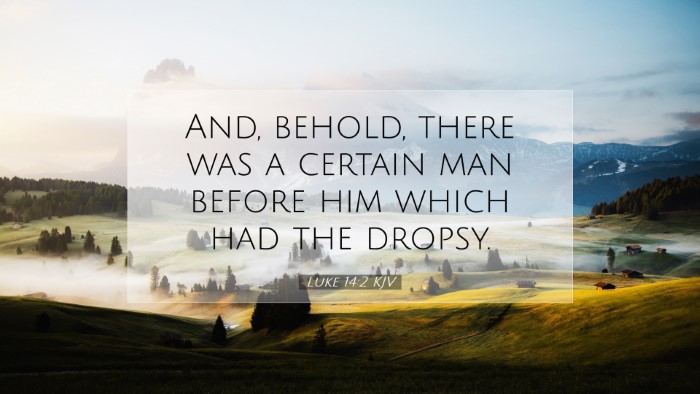Commentary on Luke 14:2
Luke 14:2 states: "And behold, there was a certain man before him which had the dropsy." This verse introduces a key moment within a larger narrative, allowing for deep theological reflection and practical application. Through the insights of notable public domain commentators, we can unearth various layers of meaning from this passage.
Contextual Background
Luke 14 takes place during a Sabbath meal at the house of one of the Pharisees, providing context that is essential for understanding the dynamics at play. The presence of a man with dropsy—a condition characterized by severe swelling due to accumulation of fluids in the body—serves as a poignant illustration of the compassion of Jesus amidst the rigid legalism of the Pharisees.
Insights from Matthew Henry
Matthew Henry, in his esteemed commentaries, highlights the following:
- Observation of the Sick: Henry notes that Jesus’ attention to the man with dropsy signifies His awareness of human suffering. In a space dominated by religious leaders, the vulnerable are often overlooked.
- Challenge to the Legalists: He illustrates how Jesus uses the situation to challenge the Pharisees’ adherence to the law over acts of mercy. Henry suggests that Christ's action here exemplifies the principle that good deeds should not be hindered by strict interpretations of the law.
- The Nature of Illness: Henry reflects on physical ailments as a metaphor for spiritual conditions, emphasizing the need for healing that transcends mere physical symptoms.
Insights from Albert Barnes
Albert Barnes offers profound observations regarding this passage:
- The Trap Set for Jesus: Barnes highlights the intent of the Pharisees in observing Jesus’ interaction with the sick man, suggesting that they wanted to test whether Jesus would heal him on the Sabbath, thus violating their interpretations of the law.
- Jesus’ Compassion: Barnes underlines the heart of Jesus’ ministry, which is characterized by compassion and healing. This should inspire modern readers and leaders in their approach to ministry.
- Literal and Figurative Healing: He draws a connection between the physical condition of dropsy and the spiritual condition of those who are spiritually parched or suffering in silence, advocating that true ministry engages both dimensions of healing.
Insights from Adam Clarke
Adam Clarke provides a wealth of historical and theological insights:
- Cultural Significance: Clarke explains the cultural implications of dropsy during that period, noting that it was viewed not just as a physical ailment but often as a result of personal sin or divine displeasure, thereby enhancing the social stigma surrounding the afflicted.
- Typology of Christ’s Ministry: He interprets the healing of the dropsical man as a typological representation of Christ’s mission to heal the broken-hearted and those marginalized by society.
- Critical Examination of the Sabbath Law: Clarke elaborates on how Jesus’ actions raise critical questions regarding the application of the Sabbath law, inviting believers to consider where mercy should prevail over sacrifice.
Theological Reflections
By synthesizing these insights, we can derive several theological reflections:
- Jesus as the Healer: Christ’s willingness to heal on the Sabbath reinforces His identity as the fulfillment of the law, bringing forth a new understanding of mercy.
- Call to Compassion: The passage serves as a challenge to contemporary church communities. Are we, like the Pharisees, more concerned with the preservation of tradition than with the needs of the suffering? This invites introspection into our ministries and outreach efforts.
- Spiritual vs. Physical Ailments: The juxtaposition of physical need against the backdrop of spiritual barrenness encourages believers to consider their own spiritual health and the health of their communities.
Conclusion
Luke 14:2 offers a rich tapestry of insights into the heart of Jesus’ ministry. The commentaries from Matthew Henry, Albert Barnes, and Adam Clarke illuminate the multifaceted nature of this passage, calling into question our perceptions of law, mercy, and the very essence of Christ's mission. It encourages pastors, students, theologians, and scholars alike to reflect on their approach to healing and compassion in a world that often mirrors the rigid legalism of the Pharisees.


